Powet Alphabet: P is for Playstation One
by William Talley, filed in $20 Game Of The Week, Games, Lost Classics, Powet Alphabet on Oct.17, 2009
Since the alphabet is the building block of our language, the Powet Alphabet is the building block of what makes us geeks.
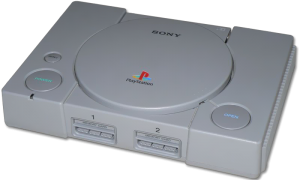
When Sony entered the market as a console manufacturer, they began a whole new era of gaming, and much of it was due to the rise of disc-based gaming. Disc based systems at the time were becoming more commonplace due to CDs being easier and cheaper to manufacture. Since they could hold more information than floppy disks and cartridges, it was easy to see why they were becoming increasingly attractive to developers. Even before the Sony, there were already several disc-based systems on the market, although few of them fully utilized the potential of the added storage space and horse power of the medium. The Sega CD for instance, was merely an add-on to the Sega Genesis. Most of its line up either consisted of amped-up versions of Sega Genesis titles, arcade ports, and interactive movies. such as the controversial Night Trap. The Super CD, an add on for the Turbographix-16, had a slightly more impressive lineup (including the highly sought after Dracula X), but it never made it beyond the borders of Japan. The 3DO, which was a standalone system, carried many of the interactive movies that graced the Sega CD, and it also boasted arcade-perfect ports of games such as Samurai Showdown and Super Street Fighter 2 Turbo. However, its high price tag prevented it from making a huge impact in the marketplace. The Phillips CD-I, just plain sucked.
Around the early 90s, Nintendo wanted to jump into the CD gaming market. Originally, it was Sony who would help them develop the technology that would power the new system. Sony was of course no stranger to gaming. Under the name Sony Imagesoft, they developed and published several games for their soon-to-be competitors (in fact, you may have even seen a couple of them as Lost Classics). However, the deal would fall through due to lawsuits on both sides, and Nintendo opted to go with Phillips instead. That deal would also fall apart, and Nintendo would eventually abandon the concept of a CD based gaming system altogether in favor of cartridge-based the Nintendo 64. It’s because of this reason that many suspect that the Playstation is what Nintendo’s CD system would have been. Regardless of weather or not that rumor was true, it was ironic that Sony, the people slated to work with Nintendo on their new hardware, instead usurped their place as top dog console manufacturer.
The Playstation, arriving on U.S. shores in 1995, had a slow start due to its $300 price tag. Its major competition would be Nintendo’s Nintendo 64 and Sega’s Saturn. The former, despite introducing the analog stick to gaming, would unfortunately be a nightmare for third party developers due to Nintendo’s stubborn insistence on a cartridge-based medium. The later, despite having a promising library of games that included Panzer Dragoon, Fighter’s Mega Mix, and Guardian Saga, was killed off by Sega in favor of the similarly ill-fated Dreamcast. Sony lowered the Playstation’s price tag shortly after its release, and soon it made its way into the homes of many a gamer who had grown up with Sega and/or Nintendo products. Before long, the big two had finally became the big three.
Like the NES a decade ago, the Sony Playstation would change the face of gaming forever, not just through its technology, but by the library of games that was released for the system, weather they were from Sony’s in-house teams or from third party developers, many of which had churned out product for Sega and Nintendo for years. Games released on the Playstation either refined or introduced game mechanics that would shape gaming for the next 14 years. The following is a list of 10 of the most significant games and franchises that were released for Sony’s console. It’s not a list of the ten best games, as there would be some games that would have been left off and others that would have been included instead.
1. Final Fantasy VII
 Perhaps no one game demonstrated the Playstation’s contribution to the video game market better than Final Fantasy VII. What made this game even more shocking was that it was even on a Playstation console at all, as Square had plied it’s trade exclusively for Nintendo since the late 1980s. However, Square left Nintendo’s stable, claiming that the company’s insistence on using cartridges was keeping developers such as Square from taking their games in the direction that they wanted to. Seeing FFVII in action, it was clear what that direction was. While the series always had deep and moving plotlines, the beautiful CG cinematics, which at times rivaled even Disney’s Toy Story, drove it home in a way never seen before. Who can forget that moment when Aeris was brutally killed by Sephiroth, or when the city of Midgard collapsed onto itself, or even when the planet is only moments away from annihilation during the game’s ending? The beautiful cinemas, along with the solid RPG gameplay that the Final Fantasy series was always known for, made FFVII a huge system seller for the Playstation, and it changed the face of an entire genre.
Perhaps no one game demonstrated the Playstation’s contribution to the video game market better than Final Fantasy VII. What made this game even more shocking was that it was even on a Playstation console at all, as Square had plied it’s trade exclusively for Nintendo since the late 1980s. However, Square left Nintendo’s stable, claiming that the company’s insistence on using cartridges was keeping developers such as Square from taking their games in the direction that they wanted to. Seeing FFVII in action, it was clear what that direction was. While the series always had deep and moving plotlines, the beautiful CG cinematics, which at times rivaled even Disney’s Toy Story, drove it home in a way never seen before. Who can forget that moment when Aeris was brutally killed by Sephiroth, or when the city of Midgard collapsed onto itself, or even when the planet is only moments away from annihilation during the game’s ending? The beautiful cinemas, along with the solid RPG gameplay that the Final Fantasy series was always known for, made FFVII a huge system seller for the Playstation, and it changed the face of an entire genre.
2. Metal Gear Solid
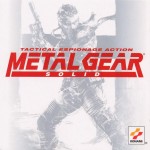 In hindsight, it seemed strange that Konami would choose to revive Metal Gear. The most U.S. gamers had seen of the series was its NES incarnation (which series creator Hideo Kojima didn’t even like) and its unofficial sequel Snake’s Revenge (which Kojima had no involvement with). Meanwhile in Japan, Metal Gear and its official sequel (which Kojima created after Snake’s Revenge) were both released on the MSX home computer. When Metal Gear Solid hit the Playstation however, it became an instant classic with players, and introduced stealth action gameplay to the masses. Though Thief came before it, MGS made stealth gameplay mainstream, as more and more developers incorporate stealth elements into their game. Like Final Fantasy VII, it also made use of cinematics to move its plot. While some more jaded gamers criticize the cinemas as being long winded, the cinemas did a good job of bringing the world to life and adding additional backstory to the series. Plot threads created here would still be bought up in later games in the series, such as last year’s MGS 4. The game also set the tone for the memorable boss fights that would be seen throughout the series. Boss fights such as sniper battle with Sniper Wolf in a snow-covered forest and the fight with Vulcan Raven (who was so huge you had to hit him with remote-controlled missiles) were intense and required strategy and planning to win. The crown jewel of these fights however, was the battle with Psycho Mantis who read your mind by reading the saves off your memory card (of course once you figured out the trick, it was simple to defeat him in short order). It was such features that saw Metal Gear Solid go from one of yesterday’s most sought after games to one of today’s hottest gaming franchises.
In hindsight, it seemed strange that Konami would choose to revive Metal Gear. The most U.S. gamers had seen of the series was its NES incarnation (which series creator Hideo Kojima didn’t even like) and its unofficial sequel Snake’s Revenge (which Kojima had no involvement with). Meanwhile in Japan, Metal Gear and its official sequel (which Kojima created after Snake’s Revenge) were both released on the MSX home computer. When Metal Gear Solid hit the Playstation however, it became an instant classic with players, and introduced stealth action gameplay to the masses. Though Thief came before it, MGS made stealth gameplay mainstream, as more and more developers incorporate stealth elements into their game. Like Final Fantasy VII, it also made use of cinematics to move its plot. While some more jaded gamers criticize the cinemas as being long winded, the cinemas did a good job of bringing the world to life and adding additional backstory to the series. Plot threads created here would still be bought up in later games in the series, such as last year’s MGS 4. The game also set the tone for the memorable boss fights that would be seen throughout the series. Boss fights such as sniper battle with Sniper Wolf in a snow-covered forest and the fight with Vulcan Raven (who was so huge you had to hit him with remote-controlled missiles) were intense and required strategy and planning to win. The crown jewel of these fights however, was the battle with Psycho Mantis who read your mind by reading the saves off your memory card (of course once you figured out the trick, it was simple to defeat him in short order). It was such features that saw Metal Gear Solid go from one of yesterday’s most sought after games to one of today’s hottest gaming franchises.
3. Resident Evil 2
 Resident Evil 5 hit the Playstation 3 and Xbox 360 this past spring. For the most part, it has been generally well received, and will most likely be nominated for one or more year-end gaming awards. However, many people will agree that RE5 is missing what made the series so special to begin with. If one were to discuss the glory days of the series, then there is a good chance they will point to this second entry. While the first Resident Evil may not have created what is known as the survival horror genre (that honor goes to Alone in the Dark), it provided a blueprint that many developers tried to copy, although few would succeed. The sequel took everything that made the first great and made it even better. Trading in the first game’s secluded mansion for an average American town, RE2 provided players with scares of something that could almost happen tomorrow. Like the first game, there were two heroes players could pick from. This time however, the adventure was so huge, each character had their own disc. Best of all, after you finished the game with one person, you could load up the second disc and play as the other character, complete with new areas, enemies, plot details, and an extended ending. There were also several unlockable features, and this insured that the dame would have plenty of replay value. Years before games like Left 4 Dead and Dead Rising, it was Resident Evil that bought George Romero-style zombie killing fun to gamers.
Resident Evil 5 hit the Playstation 3 and Xbox 360 this past spring. For the most part, it has been generally well received, and will most likely be nominated for one or more year-end gaming awards. However, many people will agree that RE5 is missing what made the series so special to begin with. If one were to discuss the glory days of the series, then there is a good chance they will point to this second entry. While the first Resident Evil may not have created what is known as the survival horror genre (that honor goes to Alone in the Dark), it provided a blueprint that many developers tried to copy, although few would succeed. The sequel took everything that made the first great and made it even better. Trading in the first game’s secluded mansion for an average American town, RE2 provided players with scares of something that could almost happen tomorrow. Like the first game, there were two heroes players could pick from. This time however, the adventure was so huge, each character had their own disc. Best of all, after you finished the game with one person, you could load up the second disc and play as the other character, complete with new areas, enemies, plot details, and an extended ending. There were also several unlockable features, and this insured that the dame would have plenty of replay value. Years before games like Left 4 Dead and Dead Rising, it was Resident Evil that bought George Romero-style zombie killing fun to gamers.
4. Tekken 2
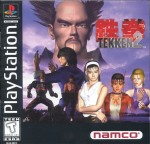 Since the early days of video gaming, the biggest challenge was getting arcade games to run at home. With primitive games such as Pong and Space Invaders, it was pretty easy. However, moving into the 80s with the NES, developers had to make compromises in order to get their games to run as best as they can while staying true to the arcade. The SNES and Geneses came pretty close, but as games such as Street Fighter II and Fatal Fury began to make use of more advance hardware, even they had to work with home versions that were graphically inferior to their arcade counterparts. However, when companies began to make disc-based systems, they finally had the horse power and storage capabilities to match the latest arcade hardware. Tekken 2 in particular, was one of the first instances of home versions that were actually surpassing their arcade counterparts. Not only did the Playstation 1 version of Tekken 2 feature graphics that were on par with the arcade version, it featured a remixed soundtrack, a new CGI intro and CGI animated endings (gotta love Anna William’s shower scene). The beautiful opening sequence pulled players into the game, and for many people (myself included), it signified the very reason they bought a Playstation. Later Namco fighters, such as Tekken 3 and Soul Edge would continue the trend by offering even more improved graphics and game modes not found in the arcade. As far as the gameplay, its sheer amount of unlockable characters, 3D combat, and emphasis on real fighting styles and combos (as opposed to the fireballs and flying kicks found in the Mortal Kombats and Street Fighters) made Tekken (along with Sega’s Virtua Fighter) much more advanced than any other fighting game on the market at a time when the series stood along alongside Battle Arena Toshinden and Virtua Fighter in the 3D fighting genre. Even when the market became over-saturated with copycats during the late 90s (just as the 2d fighting game market became over-saturated during the mid-90s), Tekken stood tall and maintained its identity, and it’s successive entries (Tekken 4 notwithstanding) continue to set standards for the fighting game genre.
Since the early days of video gaming, the biggest challenge was getting arcade games to run at home. With primitive games such as Pong and Space Invaders, it was pretty easy. However, moving into the 80s with the NES, developers had to make compromises in order to get their games to run as best as they can while staying true to the arcade. The SNES and Geneses came pretty close, but as games such as Street Fighter II and Fatal Fury began to make use of more advance hardware, even they had to work with home versions that were graphically inferior to their arcade counterparts. However, when companies began to make disc-based systems, they finally had the horse power and storage capabilities to match the latest arcade hardware. Tekken 2 in particular, was one of the first instances of home versions that were actually surpassing their arcade counterparts. Not only did the Playstation 1 version of Tekken 2 feature graphics that were on par with the arcade version, it featured a remixed soundtrack, a new CGI intro and CGI animated endings (gotta love Anna William’s shower scene). The beautiful opening sequence pulled players into the game, and for many people (myself included), it signified the very reason they bought a Playstation. Later Namco fighters, such as Tekken 3 and Soul Edge would continue the trend by offering even more improved graphics and game modes not found in the arcade. As far as the gameplay, its sheer amount of unlockable characters, 3D combat, and emphasis on real fighting styles and combos (as opposed to the fireballs and flying kicks found in the Mortal Kombats and Street Fighters) made Tekken (along with Sega’s Virtua Fighter) much more advanced than any other fighting game on the market at a time when the series stood along alongside Battle Arena Toshinden and Virtua Fighter in the 3D fighting genre. Even when the market became over-saturated with copycats during the late 90s (just as the 2d fighting game market became over-saturated during the mid-90s), Tekken stood tall and maintained its identity, and it’s successive entries (Tekken 4 notwithstanding) continue to set standards for the fighting game genre.
5. Twisted Metal 2
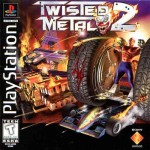 The Playstation era saw the rise of a new genre, car combat, and Sony’s Twisted Metal was at the top of the pack. This new genre was basically demolition derby with guns added. Nintendo’s Mario Kart laid down the foundation for this new genre, but it was games such as Twisted Metal which really moved it forward. Twisted Metal 2 was heralded by many fans as the best entry in the series, as it would be the last game in the series that developer Singletrac worked on before splitting from Sony. Twisted Metal 2 took the chaos from the original game and took it around the world, from Los Angeles to Paris. The slightly destructible environments added strategy to the game and made for some cool visuals. It was quite satisfying to watch the Eiffel Tower blow up and destroy anyone stupid enough to be inside. The game’s cast of bizarre characters also made Twisted Metal 2 memorable. Players could hit the mode with characters such as Sweet Tooth, Mr. Grimm, Axel, and several other drivers who were unique as the vehicles they drove. Besides Twisted Metal, the amount of games that could do car combat right can almost be counted on only one hand. Not even Sony could properly follow up Twisted Metal 2, as Twisted Metal 3 was ill received by fans and Twisted Metal 4 went ignored. It wasn’t until SingleTrac developers reunited with Sony to develop Twisted Metal Black. Even after that game’s success, the PSP entry Twisted Metal Head On bought back the atmosphere of Twisted Metal 2 while negating 3 and 4 from the franchise’s overall storyline.
The Playstation era saw the rise of a new genre, car combat, and Sony’s Twisted Metal was at the top of the pack. This new genre was basically demolition derby with guns added. Nintendo’s Mario Kart laid down the foundation for this new genre, but it was games such as Twisted Metal which really moved it forward. Twisted Metal 2 was heralded by many fans as the best entry in the series, as it would be the last game in the series that developer Singletrac worked on before splitting from Sony. Twisted Metal 2 took the chaos from the original game and took it around the world, from Los Angeles to Paris. The slightly destructible environments added strategy to the game and made for some cool visuals. It was quite satisfying to watch the Eiffel Tower blow up and destroy anyone stupid enough to be inside. The game’s cast of bizarre characters also made Twisted Metal 2 memorable. Players could hit the mode with characters such as Sweet Tooth, Mr. Grimm, Axel, and several other drivers who were unique as the vehicles they drove. Besides Twisted Metal, the amount of games that could do car combat right can almost be counted on only one hand. Not even Sony could properly follow up Twisted Metal 2, as Twisted Metal 3 was ill received by fans and Twisted Metal 4 went ignored. It wasn’t until SingleTrac developers reunited with Sony to develop Twisted Metal Black. Even after that game’s success, the PSP entry Twisted Metal Head On bought back the atmosphere of Twisted Metal 2 while negating 3 and 4 from the franchise’s overall storyline.
6. Castlevania: Symphony of the Night
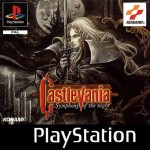 While the previous 5 games set new boundaries in 3D gaming, Konami’s Castlevania proved that there was still room for old school 2D gameplay in the new era of gaming. Not only that, but they introduced a brand-new style of gameplay for the long-standing series, trading in the traditional linear gameplay for an exploration-focused nonlinear design that was seeming inspired by Metroid. With RPG elements added to the gameplay, SOTN was one of the biggest and deepest Castlevania games yet. Players took control of Alucard, the son of Dracula. He was tasked with discovering the truth behind the sudden appearance of his father’s fortress Castlevania, which was ran by none other than….Richtel Belmont? Playing through the game, it would become apparent that things were not at all what they seemed. Just when you thought you had the whole game figured out (and provided you had the right item), the game threw in a monkey wrench, and you had to explore an alternate version of Castlevania which was upside down. It was moments such as that which made SOTN a hit with both fans and critics alike. It was such a hit, that many later Castlevania titles stuck closely to SOTN’s formula.
While the previous 5 games set new boundaries in 3D gaming, Konami’s Castlevania proved that there was still room for old school 2D gameplay in the new era of gaming. Not only that, but they introduced a brand-new style of gameplay for the long-standing series, trading in the traditional linear gameplay for an exploration-focused nonlinear design that was seeming inspired by Metroid. With RPG elements added to the gameplay, SOTN was one of the biggest and deepest Castlevania games yet. Players took control of Alucard, the son of Dracula. He was tasked with discovering the truth behind the sudden appearance of his father’s fortress Castlevania, which was ran by none other than….Richtel Belmont? Playing through the game, it would become apparent that things were not at all what they seemed. Just when you thought you had the whole game figured out (and provided you had the right item), the game threw in a monkey wrench, and you had to explore an alternate version of Castlevania which was upside down. It was moments such as that which made SOTN a hit with both fans and critics alike. It was such a hit, that many later Castlevania titles stuck closely to SOTN’s formula.
7. Street Fighter Alpha 3
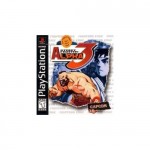 It was only by the good grace of god that SFA3 was able to hit the Playstation. The PS1 wasn’t particularly adept at handling the CPS 2 and 3 powered Capcom arcade titles. In fact, many Playstation home ports of Capcom arcade games had to cut out several frames of animation and reduce the speed just to get it to fit. As a matter of fact, a PS1 version of X-Men vs Street Fighter which had been released the prior year had cut out the tag team mode which made the arcade game so popular. So it came as a total shock when it was announced that not only would Street Fighter Alpha 3 come to Playstation, but it would also contain several extras. SFA 3 bought back all the classic Street Fighter characters such as Ken, Ryu, and Chun Li. Several new characters were added, such as Kari and R. Mika. The home version bought back characters such as Guile and Fei Long, and therefore SFA 3’s cast contained every character who was even in a 2D Street Fighter game. Several home exclusive game modes made the package even more epic. World Tour mode allowed players to develop their characters RPG style, while Dramatic Battle mode allow players to create 2 on one handicap matchups, complete with a special background that was reminiscent of the Street Fighter animated movie, thereby allowing gamers to relive that final battle against M. Bison from the film. It was good to see that even as Tekken and SoulCalibur were taking the 3D fighting genre to new heights, companies such as Capcom were keeping 2D fighting games alive and well.
It was only by the good grace of god that SFA3 was able to hit the Playstation. The PS1 wasn’t particularly adept at handling the CPS 2 and 3 powered Capcom arcade titles. In fact, many Playstation home ports of Capcom arcade games had to cut out several frames of animation and reduce the speed just to get it to fit. As a matter of fact, a PS1 version of X-Men vs Street Fighter which had been released the prior year had cut out the tag team mode which made the arcade game so popular. So it came as a total shock when it was announced that not only would Street Fighter Alpha 3 come to Playstation, but it would also contain several extras. SFA 3 bought back all the classic Street Fighter characters such as Ken, Ryu, and Chun Li. Several new characters were added, such as Kari and R. Mika. The home version bought back characters such as Guile and Fei Long, and therefore SFA 3’s cast contained every character who was even in a 2D Street Fighter game. Several home exclusive game modes made the package even more epic. World Tour mode allowed players to develop their characters RPG style, while Dramatic Battle mode allow players to create 2 on one handicap matchups, complete with a special background that was reminiscent of the Street Fighter animated movie, thereby allowing gamers to relive that final battle against M. Bison from the film. It was good to see that even as Tekken and SoulCalibur were taking the 3D fighting genre to new heights, companies such as Capcom were keeping 2D fighting games alive and well.
8. Tomb Raider
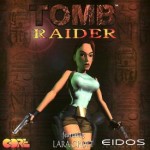 When it was first released, Tomb Raider representative a new standard for action gaming with its exploration-heavy gameplay, fully 3D environments and movement, and polygonal graphics. Players explored exotic locales such as Egypt and Peru while solving puzzles and avoiding deadly traps. However, Tomb Raider might be more famous for its protagonist, Lara Croft. Despite her ‘assets’, Lara Croft became a hit with gamers as a female Indiana Jones. Croft was such a hit with fans, that Eidos commissioned several real life actresses to portray her. Perhaps the most famous was Angelina Jolie, who played the part of Lara Croft in the two Tomb Raider films. Tomb Raider spawned a franchise, complete with movies, comic books, and action figures. While the series suffered through a serious slump for several years, 2006’s Tomb Raider Legend bought the franchise back from the depths of its own tomb, once again setting it apart from the many games that tried to rip off its formula.
When it was first released, Tomb Raider representative a new standard for action gaming with its exploration-heavy gameplay, fully 3D environments and movement, and polygonal graphics. Players explored exotic locales such as Egypt and Peru while solving puzzles and avoiding deadly traps. However, Tomb Raider might be more famous for its protagonist, Lara Croft. Despite her ‘assets’, Lara Croft became a hit with gamers as a female Indiana Jones. Croft was such a hit with fans, that Eidos commissioned several real life actresses to portray her. Perhaps the most famous was Angelina Jolie, who played the part of Lara Croft in the two Tomb Raider films. Tomb Raider spawned a franchise, complete with movies, comic books, and action figures. While the series suffered through a serious slump for several years, 2006’s Tomb Raider Legend bought the franchise back from the depths of its own tomb, once again setting it apart from the many games that tried to rip off its formula.
9. Gran Turismo 2
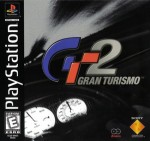 While Namco’s Ridge Racer helped attract racing fans to Sony’s console, the capacity of the PS1’s disc allowed for something that was bigger and more expansive than what the Ridge Racer games had offered. Polyphony Digital helped to deliver this in spades with Gran Turismo. Gran Turismo offered racing fans a simulation that had an unprecedented amount of depth, and its sequel added even more complexity. Featuring 27 tracks and 650 cars from real world manufacturers, Gran Turismo was a dream package for car enthusiasts. Players had to earn licenses to compete on new courses, earn trophies, and buy new cars in order in order to progress. There was an arcade mode for players to unwind by taking any car on any track. This time however, the game was so huge that the game needed to be split between two discs! One disc was for simulation, and the other was for arcade mode. Gran Turismo had so much to offer players regardless of weather of not they were racing enthusiasts. A soundtrack featuring then-current rock hits helped to seal the deal for gamers. To this day, Gran Turismo 2 remains one of the biggest racing games of all time, and it helped to make room for more complex racing games such as Forza Motorsport on the Xbox.
While Namco’s Ridge Racer helped attract racing fans to Sony’s console, the capacity of the PS1’s disc allowed for something that was bigger and more expansive than what the Ridge Racer games had offered. Polyphony Digital helped to deliver this in spades with Gran Turismo. Gran Turismo offered racing fans a simulation that had an unprecedented amount of depth, and its sequel added even more complexity. Featuring 27 tracks and 650 cars from real world manufacturers, Gran Turismo was a dream package for car enthusiasts. Players had to earn licenses to compete on new courses, earn trophies, and buy new cars in order in order to progress. There was an arcade mode for players to unwind by taking any car on any track. This time however, the game was so huge that the game needed to be split between two discs! One disc was for simulation, and the other was for arcade mode. Gran Turismo had so much to offer players regardless of weather of not they were racing enthusiasts. A soundtrack featuring then-current rock hits helped to seal the deal for gamers. To this day, Gran Turismo 2 remains one of the biggest racing games of all time, and it helped to make room for more complex racing games such as Forza Motorsport on the Xbox.
10. Suikoden
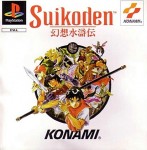 Long before Final Fantasy VII changed the face of RPG gaming, Konami’s Suikoden took what was best about old school 16 bit RPGs and added in a few new tricks. For starters, players assembled their crew by seeking out 108 different characters, with a majority of them being available to use in combat. The storyline was quite deep as well, and it smacked of political intrigue and double crossing. One on one dueling and all-out war modes (both of which played similar to paper, rock, and scissors), helped break up the action. Even in today’s modern RPG world, games such as Suikoden showed gamers that old school RPG can hold its own against the fancy new RPGs that were popping up on the PS1 and its competition.
Long before Final Fantasy VII changed the face of RPG gaming, Konami’s Suikoden took what was best about old school 16 bit RPGs and added in a few new tricks. For starters, players assembled their crew by seeking out 108 different characters, with a majority of them being available to use in combat. The storyline was quite deep as well, and it smacked of political intrigue and double crossing. One on one dueling and all-out war modes (both of which played similar to paper, rock, and scissors), helped break up the action. Even in today’s modern RPG world, games such as Suikoden showed gamers that old school RPG can hold its own against the fancy new RPGs that were popping up on the PS1 and its competition.
I think I speak for many gamers when I say that while it was because of Nintendo that got me playing video games, it was because of Sony that I kept playing them. These games, along with countless others, have played a vital role in shaping gaming into what it is today. So whenever you stock your garage in Forza, blow apart a zombie in Left 4 Dead, or make your way through the world of Shadow Complex, think about the Playstation. Even today as the system is well into its third iteration, the Playstation’s library continues to innovate with games such as Little Big Planet and Resistance. If you haven’t checked out these games yet, then I strongly advise you to do so, weather you purchase them off the Playstation Network, or buy them from amazon.com (by clicking the thumbnails).


 PS3
PS3
 Famicom Dojo
Famicom Dojo KEEP PLAYING
KEEP PLAYING KEEP PLAYING: Rewind
KEEP PLAYING: Rewind Powet Toys
Powet Toys Powetcast
Powetcast Hitchhiker's Guide POWETcast
Hitchhiker's Guide POWETcast















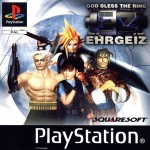

Pingback: Powet Alphabet: S is for 16-bit - POWET.TV